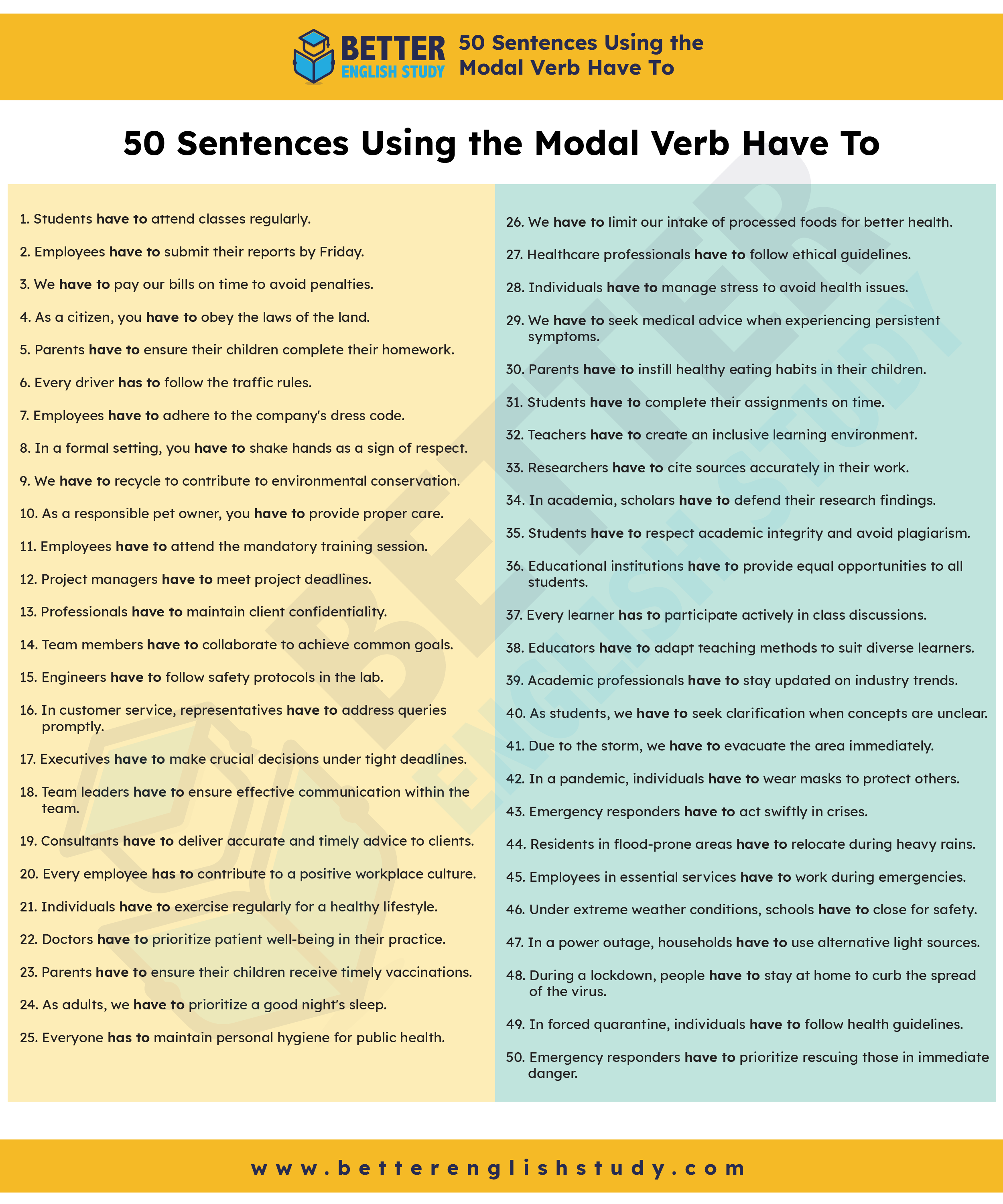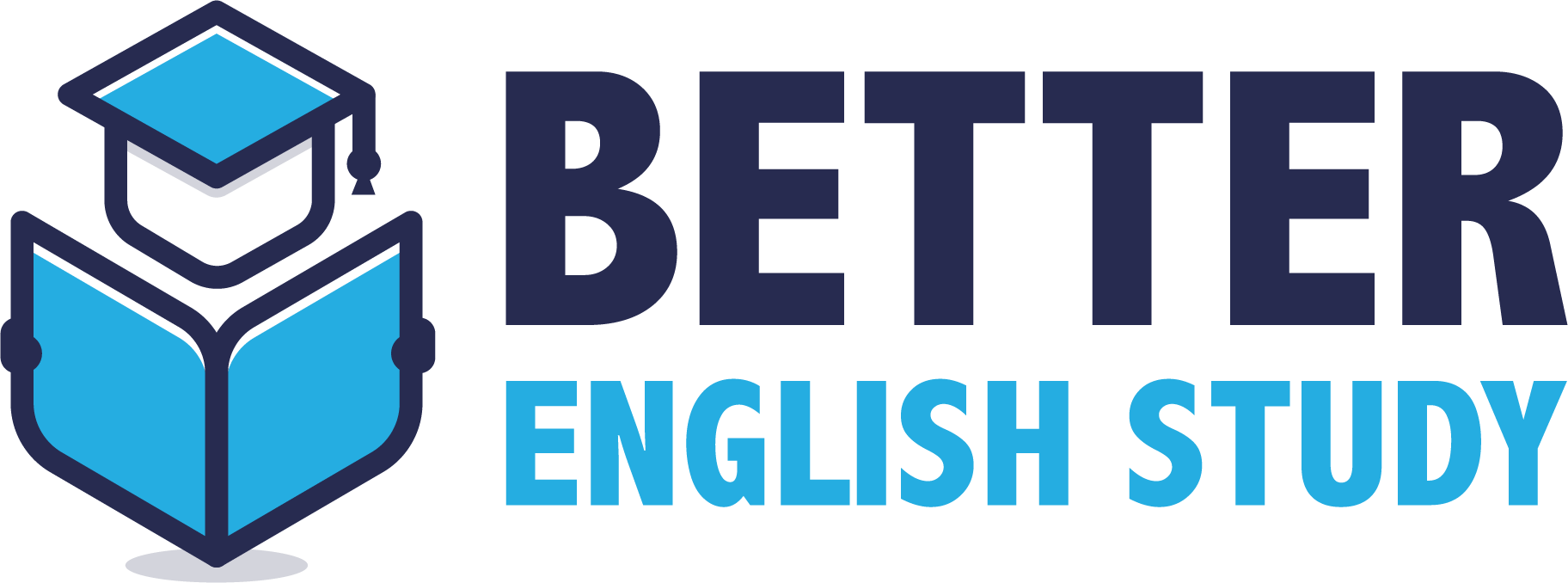
In the intricate tapestry of the English language, the modal verb “have to” weaves a thread of obligation and forced circumstances. Understanding when to use “have to” is crucial for expressing duties and acknowledging situations beyond our control.
In this article, we will explore 50 examples that illustrate the diverse contexts in which the modal verb “have to” can be employed, emphasizing the keywords “obligation” and “forced circumstances.”
When to Use Have To
Before delving into the examples, let’s explore when to use “have to” in English. “Have to” is a modal verb that signifies an obligation or necessity. It is employed when expressing duties, and responsibilities, or when circumstances force a particular action. Understanding when to use “have to” is pivotal for effective communication, ensuring that your expressions accurately convey a sense of obligation or inevitability.
Now, let’s explore the examples.
1. Everyday Obligations
- Students have to attend classes regularly.
- Employees have to submit their reports by Friday.
- We have to pay our bills on time to avoid penalties.
- As a citizen, you have to obey the laws of the land.
- Parents have to ensure their children complete their homework.
- Every driver has to follow the traffic rules.
- Employees have to adhere to the company’s dress code.
- In a formal setting, you have to shake hands as a sign of respect.
- We have to recycle to contribute to environmental conservation.
- As a responsible pet owner, you have to provide proper care.
2. Workplace Obligations
- Employees have to attend the mandatory training session.
- Project managers have to meet project deadlines.
- Professionals have to maintain client confidentiality.
- Team members have to collaborate to achieve common goals.
- Engineers have to follow safety protocols in the lab.
- In customer service, representatives have to address queries promptly.
- Executives have to make crucial decisions under tight deadlines.
- Team leaders have to ensure effective communication within the team.
- Consultants have to deliver accurate and timely advice to clients.
- Every employee has to contribute to a positive workplace culture.

3. Health and Well-being Obligations
- Individuals have to exercise regularly for a healthy lifestyle.
- Doctors have to prioritize patient well-being in their practice.
- Parents have to ensure their children receive timely vaccinations.
- As adults, we have to prioritize a good night’s sleep.
- Everyone has to maintain personal hygiene for public health.
- We have to limit our intake of processed foods for better health.
- Healthcare professionals have to follow ethical guidelines.
- Individuals have to manage stress to avoid health issues.
- We have to seek medical advice when experiencing persistent symptoms.
- Parents have to instill healthy eating habits in their children.
4. Education and Learning Obligations
- Students have to complete their assignments on time.
- Teachers have to create an inclusive learning environment.
- Researchers have to cite sources accurately in their work.
- In academia, scholars have to defend their research findings.
- Students have to respect academic integrity and avoid plagiarism.
- Educational institutions have to provide equal opportunities to all students.
- Every learner has to participate actively in class discussions.
- Educators have to adapt teaching methods to suit diverse learners.
- Academic professionals have to stay updated on industry trends.
- As students, we have to seek clarification when concepts are unclear.
5. Forced Circumstances
- Due to the storm, we have to evacuate the area immediately.
- In a pandemic, individuals have to wear masks to protect others.
- Emergency responders have to act swiftly in crises.
- Residents in flood-prone areas have to relocate during heavy rains.
- Employees in essential services have to work during emergencies.
- Under extreme weather conditions, schools have to close for safety.
- In a power outage, households have to use alternative light sources.
- During a lockdown, people have to stay at home to curb the spread of the virus.
- In forced quarantine, individuals have to follow health guidelines.
- Emergency responders have to prioritize rescuing those in immediate danger.
These 50 examples illustrate the varied applications of the modal verb “have to” in expressing obligations and acknowledging forced circumstances. Whether addressing everyday responsibilities, workplace duties, health obligations, educational commitments, or situations beyond our control, “have to” is a linguistic tool that encapsulates the essence of duty and the acceptance of circumstances we cannot change.
By incorporating “have to” into language use, individuals can effectively communicate their responsibilities and the unavoidable demands of specific situations while ensuring clarity in expression.
